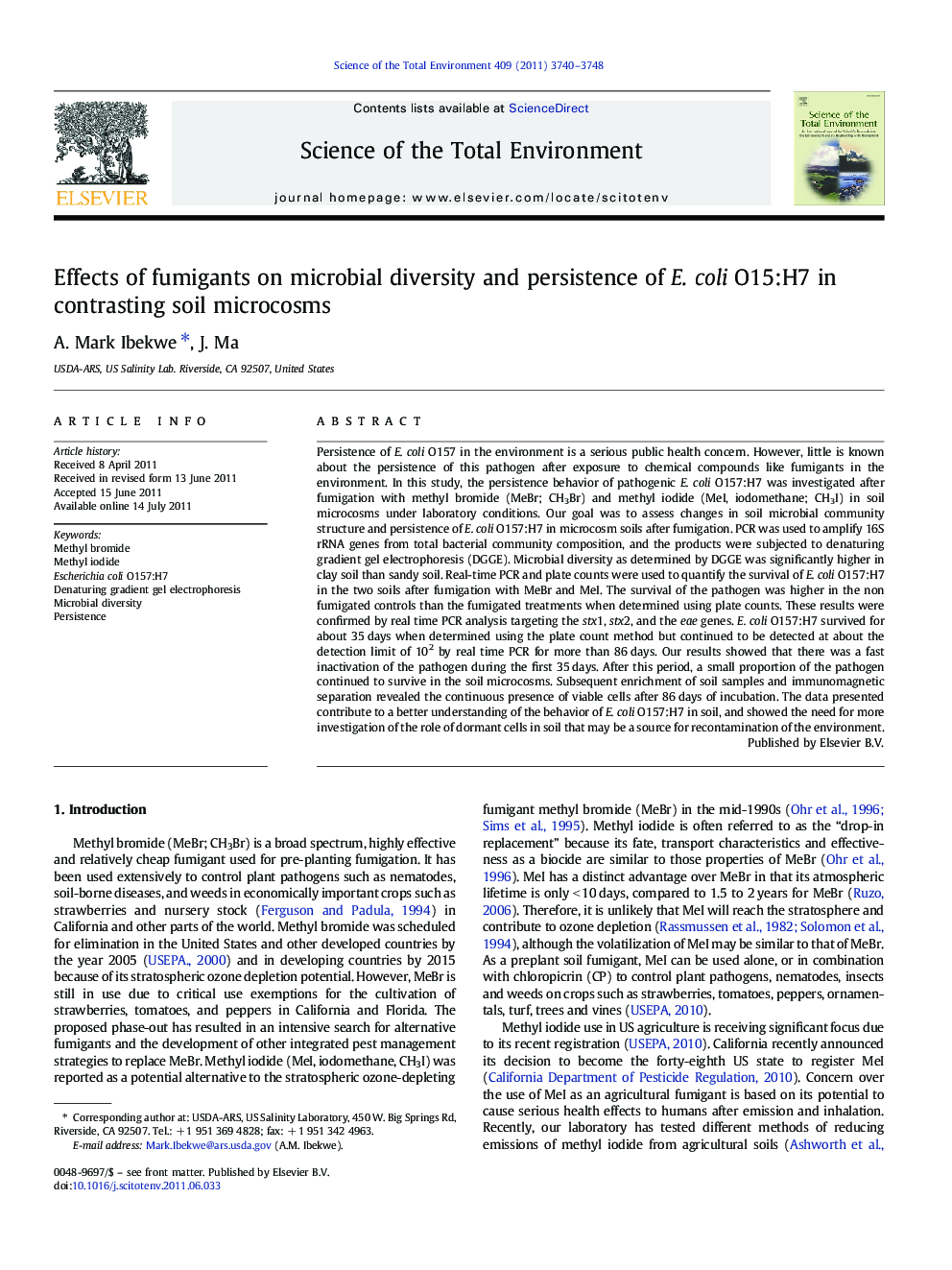| کد مقاله | کد نشریه | سال انتشار | مقاله انگلیسی | نسخه تمام متن |
|---|---|---|---|---|
| 4430029 | 1619843 | 2011 | 9 صفحه PDF | دانلود رایگان |

Persistence of E. coli O157 in the environment is a serious public health concern. However, little is known about the persistence of this pathogen after exposure to chemical compounds like fumigants in the environment. In this study, the persistence behavior of pathogenic E. coli O157:H7 was investigated after fumigation with methyl bromide (MeBr; CH3Br) and methyl iodide (MeI, iodomethane; CH3I) in soil microcosms under laboratory conditions. Our goal was to assess changes in soil microbial community structure and persistence of E. coli O157:H7 in microcosm soils after fumigation. PCR was used to amplify 16S rRNA genes from total bacterial community composition, and the products were subjected to denaturing gradient gel electrophoresis (DGGE). Microbial diversity as determined by DGGE was significantly higher in clay soil than sandy soil. Real-time PCR and plate counts were used to quantify the survival of E. coli O157:H7 in the two soils after fumigation with MeBr and MeI. The survival of the pathogen was higher in the non fumigated controls than the fumigated treatments when determined using plate counts. These results were confirmed by real time PCR analysis targeting the stx1, stx2, and the eae genes. E. coli O157:H7 survived for about 35 days when determined using the plate count method but continued to be detected at about the detection limit of 102 by real time PCR for more than 86 days. Our results showed that there was a fast inactivation of the pathogen during the first 35 days. After this period, a small proportion of the pathogen continued to survive in the soil microcosms. Subsequent enrichment of soil samples and immunomagnetic separation revealed the continuous presence of viable cells after 86 days of incubation. The data presented contribute to a better understanding of the behavior of E. coli O157:H7 in soil, and showed the need for more investigation of the role of dormant cells in soil that may be a source for recontamination of the environment.
► E. coli O157:H7 survived for about 35 days using plate count method.
► Low concentrations by real time PCR was observed for more than 86 days.
► This suggests the presence of dormant but viable cells in the microcosms.
► Enrichment and immunomagnetic separation revealed presence of viable cells.
Journal: Science of The Total Environment - Volume 409, Issue 19, 1 September 2011, Pages 3740–3748